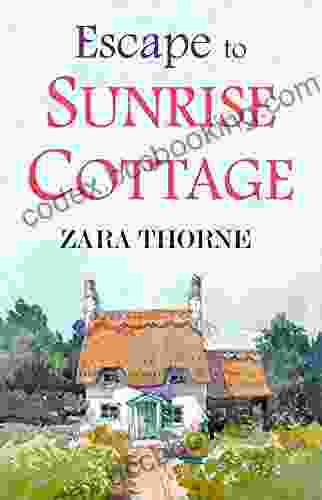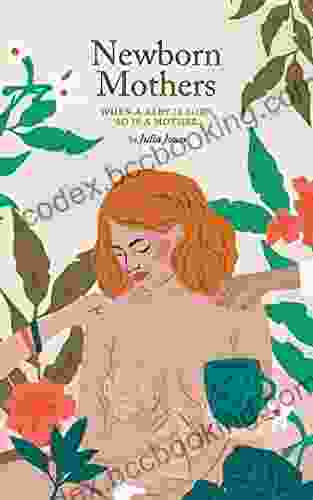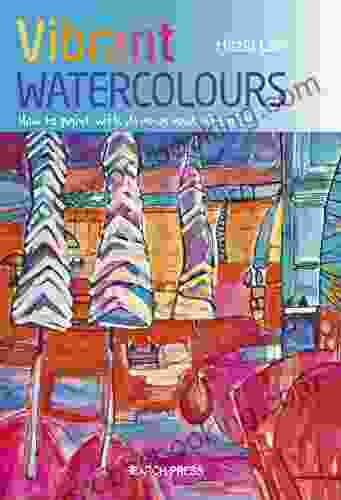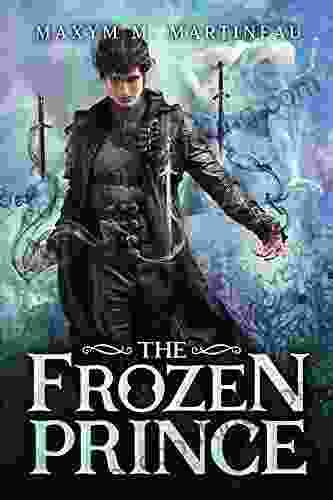How to Paint with Drama and Intensity: Unleash the Power of Color and Light

Are you ready to take your painting to the next level? In this comprehensive guide, we'll delve into the secrets of painting with drama and intensity. You'll learn how to use color, light, and composition to create breathtaking works of art that will captivate and inspire.
4.1 out of 5
| Language | : | English |
| File size | : | 283614 KB |
| Screen Reader | : | Supported |
| Print length | : | 128 pages |
Chapter 1: The Power of Color
Color is one of the most powerful tools in a painter's arsenal. It can be used to create a wide range of emotions, from joy and excitement to sadness and anger.
When choosing colors for your painting, it's important to consider the following:
- Hue: The pure color, such as red, blue, or yellow.
- Saturation: The intensity of the color, from dull to vibrant.
- Value: The lightness or darkness of the color, from black to white.
By understanding how to use color effectively, you can create paintings that are both visually appealing and emotionally resonant.
Chapter 2: The Importance of Light
Light is essential for creating drama and intensity in your paintings. It can be used to highlight and shadow, create depth and dimension, and add a sense of atmosphere.
When painting, it's important to consider the following:
- Direction of light: Where is the light coming from in your painting?
- Quality of light: Is the light harsh or diffused? Natural or artificial?
- Color of light: The color of light can affect the overall mood and tone of your painting.
By understanding how to use light effectively, you can create paintings that are both realistic and emotionally evocative.
Chapter 3: The Elements of Composition
Composition is the arrangement of elements in a painting. It can be used to create a sense of balance, harmony, and visual interest.
When composing your painting, it's important to consider the following:
- Focal point: The main area of interest in your painting.
- Value contrast: The difference in lightness or darkness between different areas of your painting.
- Color contrast: The difference in color between different areas of your painting.
- Line and shape: The use of lines and shapes to create visual interest and movement.
By understanding the elements of composition, you can create paintings that are both visually appealing and structurally sound.
Chapter 4: Putting It All Together
Now that you have a basic understanding of color, light, and composition, it's time to put it all together and start painting with drama and intensity.
Here are a few tips to help you get started:
- Use a limited color palette. This will help to create a sense of unity and focus in your painting.
- Use strong values. This will help to create contrast and depth in your painting.
- Pay attention to composition. Make sure that your painting has a strong focal point and a sense of balance.
- Don't be afraid to experiment. The best way to learn is to try new things and see what works.
With a little practice, you'll be able to create paintings that are full of drama and intensity. So what are you waiting for? Start painting today!
Painting with drama and intensity is a skill that can be learned and mastered with practice. By understanding the power of color, light, and composition, you can create paintings that are both visually appealing and emotionally resonant.
So what are you waiting for? Start painting today and unleash the artist within!
4.1 out of 5
| Language | : | English |
| File size | : | 283614 KB |
| Screen Reader | : | Supported |
| Print length | : | 128 pages |
Do you want to contribute by writing guest posts on this blog?
Please contact us and send us a resume of previous articles that you have written.
 Book
Book Novel
Novel Page
Page Chapter
Chapter Text
Text Story
Story Genre
Genre Reader
Reader Library
Library Paperback
Paperback E-book
E-book Magazine
Magazine Newspaper
Newspaper Paragraph
Paragraph Sentence
Sentence Bookmark
Bookmark Shelf
Shelf Glossary
Glossary Bibliography
Bibliography Foreword
Foreword Preface
Preface Synopsis
Synopsis Annotation
Annotation Footnote
Footnote Manuscript
Manuscript Scroll
Scroll Codex
Codex Tome
Tome Bestseller
Bestseller Classics
Classics Library card
Library card Narrative
Narrative Biography
Biography Autobiography
Autobiography Memoir
Memoir Reference
Reference Encyclopedia
Encyclopedia Emily Spivack
Emily Spivack Laurence Raw
Laurence Raw Jorge Muniz
Jorge Muniz Louis Rosenfeld
Louis Rosenfeld Rajiv L B Roy
Rajiv L B Roy Julio O Torres
Julio O Torres Olivia Laing
Olivia Laing Lynn Thorndike
Lynn Thorndike Taniya Cobbin
Taniya Cobbin Elle Wright
Elle Wright Em Campbell Pretty
Em Campbell Pretty Warith Niallah
Warith Niallah Sjaak Laan
Sjaak Laan Emanuela Todeva
Emanuela Todeva Suzanne Wylde
Suzanne Wylde Harriet O Brien
Harriet O Brien Ellen Tomaszewski
Ellen Tomaszewski Michael Kranish
Michael Kranish Julianna Swaney
Julianna Swaney Ephraim Emerton
Ephraim Emerton
Light bulbAdvertise smarter! Our strategic ad space ensures maximum exposure. Reserve your spot today!

 Ralph EllisonUnlock the Secrets of Financial Success: Discover How to Make Money By Only...
Ralph EllisonUnlock the Secrets of Financial Success: Discover How to Make Money By Only... Hugh ReedFollow ·13.8k
Hugh ReedFollow ·13.8k T.S. EliotFollow ·11.9k
T.S. EliotFollow ·11.9k Orson Scott CardFollow ·10.6k
Orson Scott CardFollow ·10.6k Ian MitchellFollow ·6.4k
Ian MitchellFollow ·6.4k Tyrone PowellFollow ·11.6k
Tyrone PowellFollow ·11.6k Richard AdamsFollow ·9.5k
Richard AdamsFollow ·9.5k Alfred RossFollow ·6.6k
Alfred RossFollow ·6.6k Jules VerneFollow ·3.5k
Jules VerneFollow ·3.5k

 Isaias Blair
Isaias BlairEscape to Sunrise Cottage: A Captivating Read You Won't...
Are you ready for a...

 Bradley Dixon
Bradley DixonWhen Baby Is Born, So Is Mother: A Comprehensive Guide to...
Giving birth is a...

 Mario Simmons
Mario SimmonsPhotographic Journal of Cruise Around South America: A...
Embark on an Extraordinary Expedition ...

 Langston Hughes
Langston HughesDream Achieved: Unlocking the Power Within to Make Your...
In the tapestry...
4.1 out of 5
| Language | : | English |
| File size | : | 283614 KB |
| Screen Reader | : | Supported |
| Print length | : | 128 pages |














